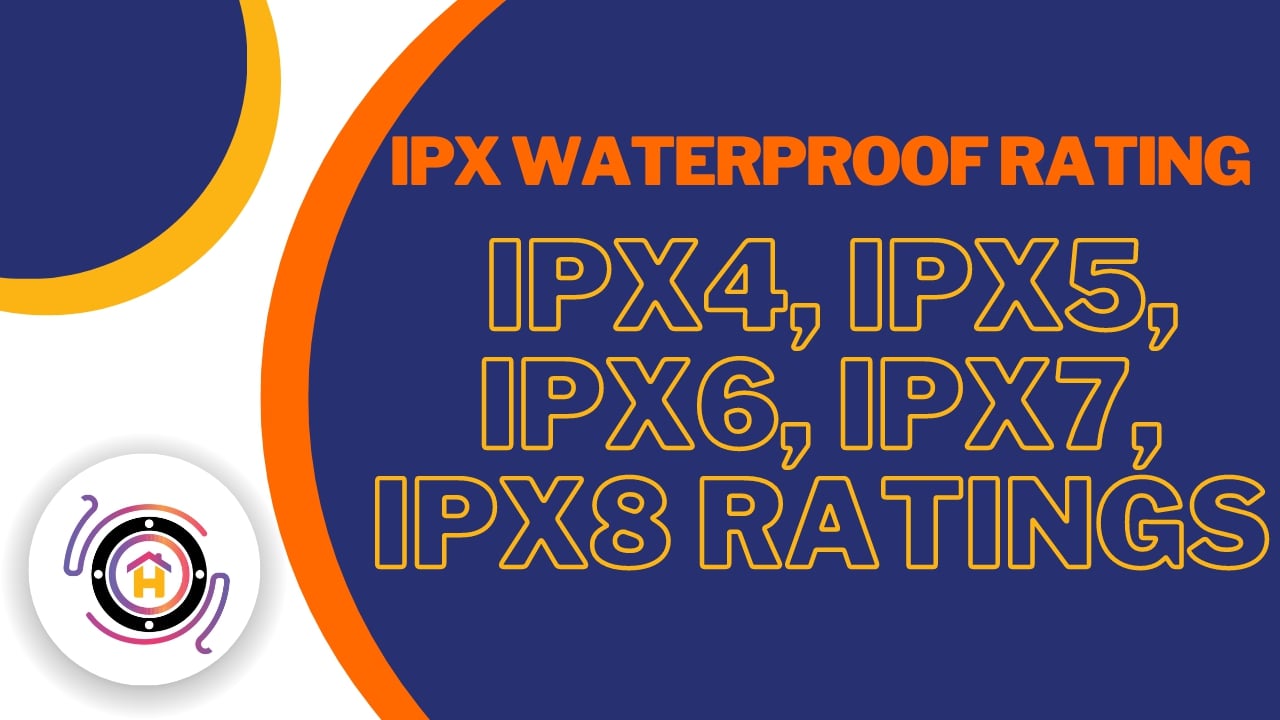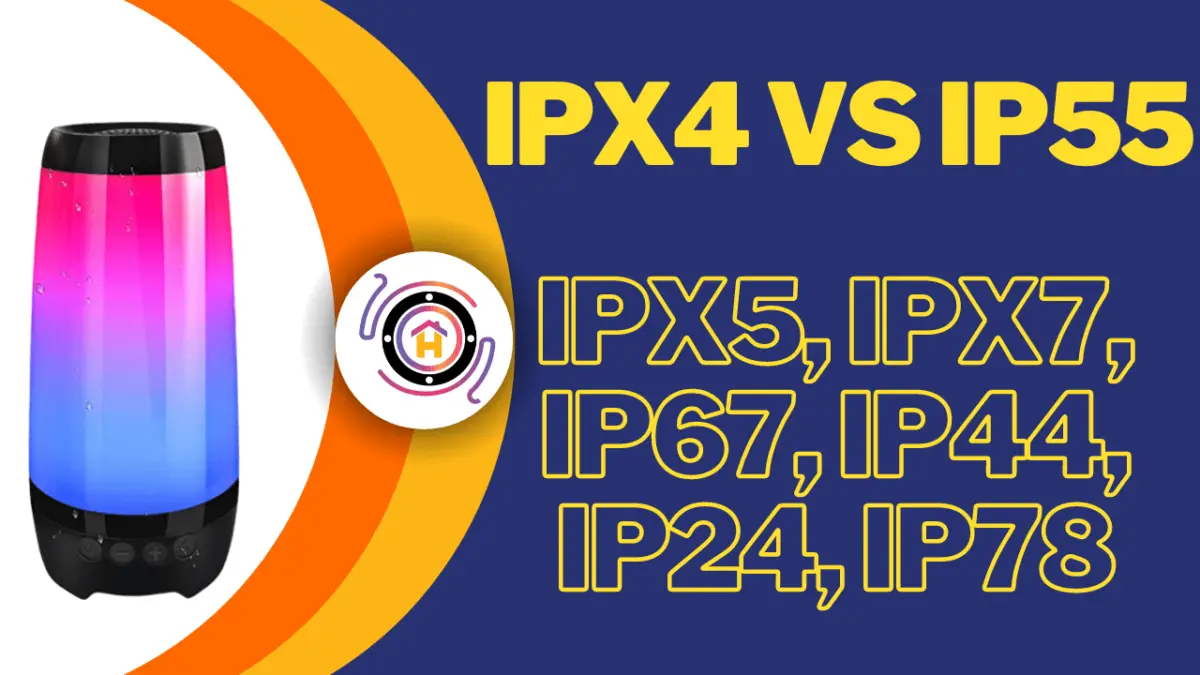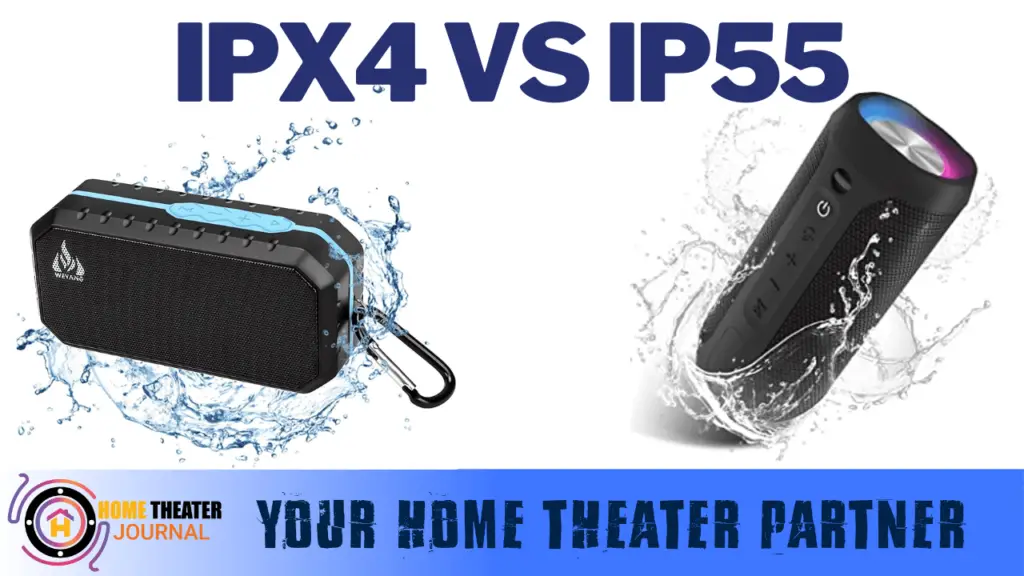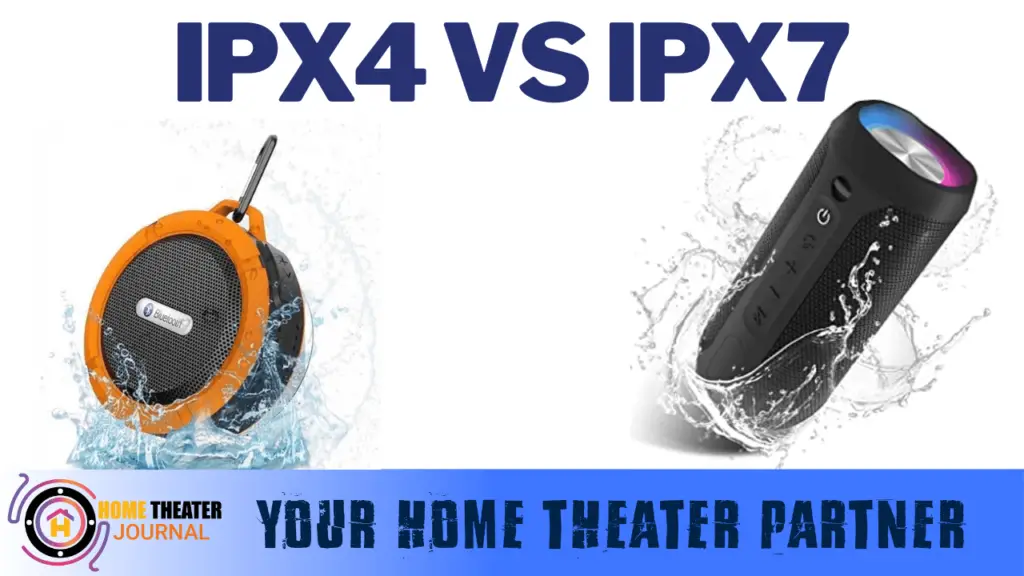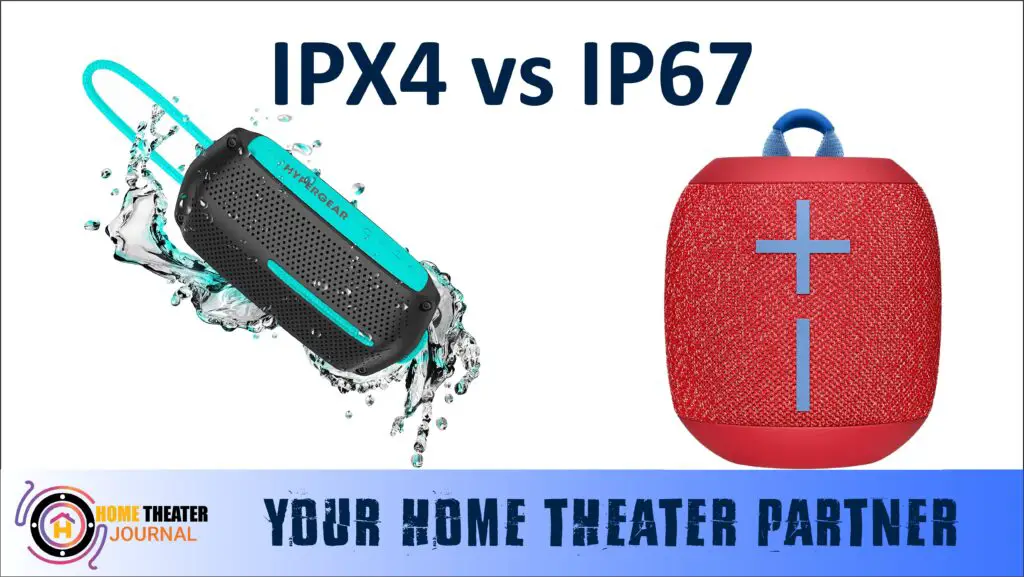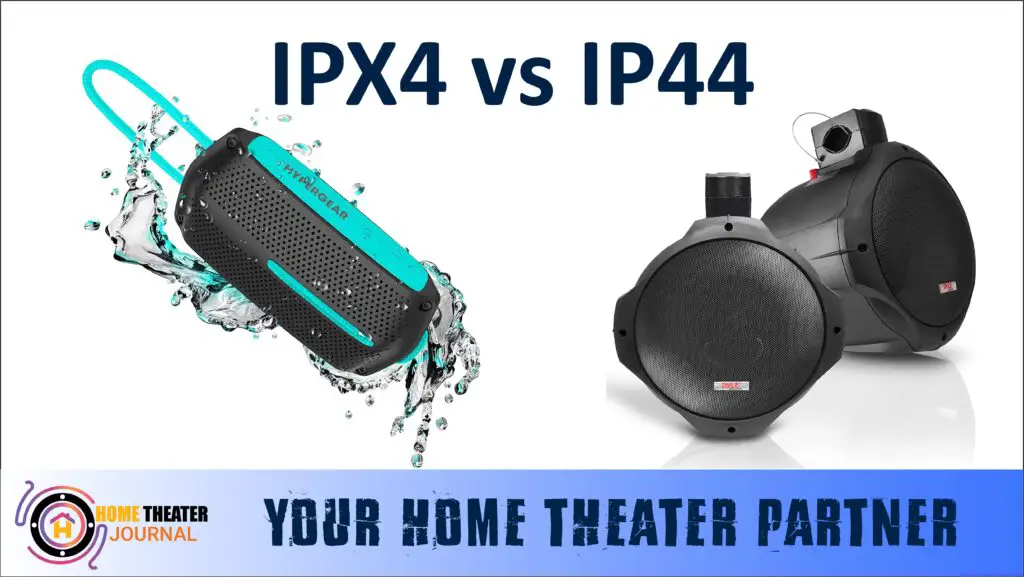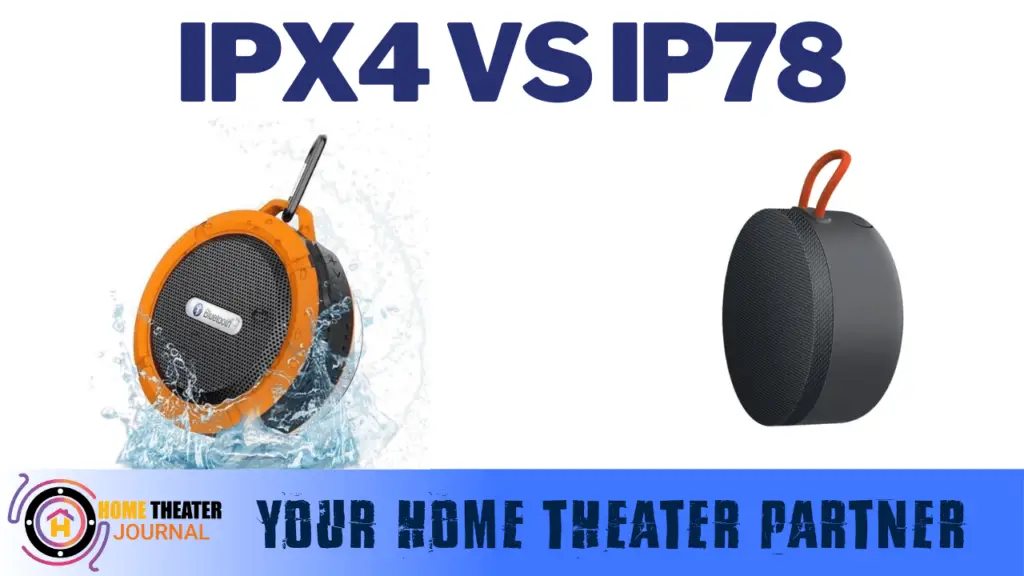IPX WaterProof Rating | IPX4, IPX5, IPX6, IPX7, IPX8 Ratings
If you buy speakers or other devices, you may see the words waterproof, water-resistant, dustproof, weather-proof, snow-proof, and shockproof, but you may not know what they mean. Before you buy any waterproof product, you should fully understand the IPX waterproof rating.
This article fully describes all IPX waterproof ratings, including IPX0, IPX1, IPX2, IPX3, IPX4, IPX5, IPX6, IPX7, and IPX8.
IPX WaterProof Ratings: What are they?
According to IPX, IP stands for “Ingress Protection” and determines the level of protection a device has against solids and liquids.
Most IP ratings range from IPX0 to IPX8. A technical protection code like this is an IP code, where “IP” means an international code, and “X” means an international code. The fourth is an international code to protect against solid objects and liquids.
For example, a device with IPX8 certification is fully waterproof and can be submerged in water for an extended period, but it has not been tested for solid object submersion. In this case, X means untested.
Independent certified companies assign an IP rating to a product after testing it, not its own manufacturer.
IPX Rating: Why is it important?
Where your device can be used depends on its IPX rating. The IPX rating of a speaker may not be necessary if you are purchasing it for indoor use, as it will not be exposed to water or dust.
You may occasionally be caught in the rain, on beaches, in pools, or wherever water and dust can be present if you buy a speaker for outdoor activities.
Know where you will use the product before purchasing it, such as portable Bluetooth speakers. Do you really need a speaker with an IPX rating? What is the difference between IPX5 and IPX8 waterproof speakers? Choosing the right speaker for you will be easier when you know what IPX rating represents and how much protection it provides. Any waterproof product should have an IPX rating before you purchase it.
Ratings of IPX water resistance: IPX0-IPX8
Testing for liquid resistance (waterproofing) assigns ratings from 0-8 to devices. The “X” represents the fact that they have not been tested for solids (dustproof). X here does not indicate “no” dust protection but rather means that it has not yet been tested.
IPXX Rating
A device with an IPXX rating has been tested neither for liquid nor solid resistance, and if you find something like this, it means it has been neither.
IPX0 Rating
Having an IPX0 rating means the device has not been tested to protect against solid objects and does not have any protection against liquids, mostly water. Any device without protection does not usually have this rating. You must also keep your device away from water if it is not written or written IPX0, as a little bit of water can severely damage such a device if left in water for an extended period of time. Indoor use is the most common use for these devices.
IPX1 Rating
The IPX1 rating indicates that this device can only resist vertically falling water and not solid objects. Such devices are at risk of damage if they are exposed to water from the sides.
IPX2 Rating
A maximum angle of 15 degrees can be achieved for water to fall on the container, but it was not tested for solid objects. When falling water hits such a device, the angle of falling water should not exceed 15° to avoid damage.
IPX3 Rating
Its resistance to solids was tested up to 60°, but not for solids. Still, it cannot hold water splashes if they come from the sides, even though it is safer than IPX2.
IPX4 Rating
Devices can resist all directions of water splashes with this rating. It was not tested for solids, but there was no limitation on an angle.
IPX5 Rating
The IPX5 rating allows devices to withstand low-pressure jets of water. However, solids have not been tested. These devices will not be damaged by conditions corresponding to low pressures, such as rain. Due to their lack of waterproofing, these devices get damaged if exposed to high-pressure water.
IPX6 Rating
Despite the IPX6 rating, all devices cannot be submerged in water due to their ability to withstand high pressures. The devices can be used anywhere there is a possibility of exposure to water, but not complete submersion. No solids are tested on these.
IPX7 Rating
In contrast to water-resistant devices, IPX7-rated devices are waterproof. The water of one-meter depth can be submerged for 30 minutes with these devices. There is no danger associated with using these anywhere. It is easy to wash these devices in water when they become dirty. It should be noted that solid objects are not tested with these.
IPX8 Rating
A complete waterproof device receives this rating. Those devices with IPX8 ratings can be submerged in water for long periods and at depths greater than 1 meter. In most cases, the manufacturer determines the exact depth and time. It is not possible to test these for solids.
A device will be rated based on its ability to protect itself against liquids (water) only, not solid particles like dust, as indicated by these 10 ratings.
Dustproof IPX ratings from IP0X to IP6X
There are six IP types – IP0X, IP1X, IP2X, IP3X, IP4X, IP5X, IP6X for solid-only devices – and one IP type – IP6X for liquid-only devices. The manufacturer has not yet been tested for this protection, but “X” never means “Zero.”
IP0X Rating
Any solid object is not protected. Larger objects can also damage it. These products require a high level of care to be safe. Liquids or water cannot be tested on these.
IP1X Rating
A device with IP1X certification is protected from objects larger than 50mm or 5cm. This type of device allows your fingers to enter, but your hand cannot. Liquids were not tested.
IP2X Rating
With an IP2X rating, solid objects up to 12.5mm and 1.25cm in diameter can be protected against the devices. Your finger can fit inside because it has the same size. No liquid resistance testing has been done on these.
IP3X Rating
A solid object is bigger than 2.5 mm or 0.25 cm, and these devices are designed to protect you from them. There are many small tools and wires included in its size. Water resistance has not been tested.
IP4X Rating
It is designed to protect against solid objects that are larger than 1mm or 0.1cm in diameter. Despite its small size and compact nature, it can be damaged if used in areas with a lot of dirt and dust. Water resistance has not been tested against this product.
IP5X Rating
Dust resistance is one of the most important characteristics of devices with an IP5X rating. Some dust can still find its way inside, causing damage to your products. However, these are not fully dustproof. A liquid-resistance test has not been performed on it.
IP6X Rating
Dustproof products receive this rating, which is the highest. The devices cannot be damaged by dust entering from any side. Worrying about dust preventing you from using these products is no need. Water resistance has not been tested.
In total, nearly seven ratings were assigned to products that haven’t been tested for liquid resistance but have been tested for solid resistance.
The IP rating for water- and dust-proofing
IP Ratings are assigned to devices that are tested for solid and liquid resistance, all of the ratings we discuss below.
These are all the possible ratings for a product tested for solid and liquid resistance. You will not find all these items in the product description, but there are a few that you can find.
A few of these are even impossible to do for many reasons. It is impossible to have a device rated IP08, for example, if we say it is rated IP08. This device is fully waterproof, meaning that it is fully splashproof, but there is no solid resistance to it, so it cannot be used.
As a result, all the IP ratings do not need to be explained because we don’t have to. This article will discuss only a few of them that are most commonly used.
IP01 Rating
The device is not protected from solids but is protected against horizontal waterfalls.
IP03 Rating
IP03 devices are not protected from solid particles, but they are resistant to water falling at an angle of 60° or more.
IP10 Rating
There is no protection against water, but it is protected against solid objects larger than 50mm.
IP12 Rating
A maximum angle of 15° allows water to fall from objects larger than 50mm.
IP20 Rating
Solids up to 12.5 mm can be blocked, but water cannot be penetrated.
IP21 Rating
Water falling vertically on the device does not injure the device, and solids larger than 12.5 mm do not damage it.
IP22 Rating
Solids larger than 12.5 mm are protected from water at an angle of 15°.
IP23 Rating
Water at an angle of a maximum of 60° is protected from solids larger than 12.5 mm.
IP24 Rating
Water splashes and solids bigger than 12.5 mm are protected from this device.
IP30 Rating
There is no protection from water and no resistance to solids larger than 2.5mm.
IP31 Rating
Water that falls vertically on the product will not be able to enter it due to its protection against solids larger than 2.5mm.
IP32 Rating
This product protects against solids and water falling at 15° or fewer angles larger than 2.5mm.
IP33 Rating
Water falling from a 60° angle at a maximum angle is protected from solids larger than 2.5mm.
IP34 Rating
Water splashes and solids exceeding 2.5mm are protected.
IP40 Rating
The product offers complete protection from solid objects larger than one mm and a complete lack of protection from water.
IP41 Rating
Water falling vertically on the device is protected from solid objects larger than 1mm.
IP42 Rating
Water falling at an angle of 15° or less and solid objects bigger than 1mm are completely protected.
IP43 Rating
Water at an angle of 60° or less and solid objects bigger than 1mm are fully protected.
IP44 Rating
This product is designed to protect you completely from solid objects bigger than 1mm as well as spills of water.
IP45 Rating
Water jets and solid objects larger than 1mm are entirely protected.
IP46 Rating
High-pressure water jets and solid objects more prominent than 1mm are entirely protected from being hit by high-pressure water jets.
IP50 Rating
Not dustproof but good at resisting dust. The product can still be damaged by dust getting inside. Water resistance is nonexistent.
IP51 Rating
Not dustproof, but dust-resistant. The product can still be damaged by dust if it gets inside. Water resistance on the device when falling vertically.
IP52 Rating
Dust-resistant but not dustproof, this product is good at resisting dust. The product can still be damaged by dust if it gets inside. At a 15° angle, it resists water falling.
IP53 Rating
This product is good at resisting dust but does not protect you from dust. Despite this, dust can still enter the product and cause it to be damaged. There is a maximum angle of 60° from which water can fall without damage.
IP54 Rating
Not dustproof, but good at resisting dust. The product can still be damaged by dust if it gets inside. This cap protects against water splashes.
IP55 Rating
Not dustproof, but good at resisting dust. Even so, dust can damage the product if it gets inside. The system protects against water pressure that is too low.
IP56 Rating
Not dustproof, but good at resisting dust. The product can, however, be damaged by dust that gets inside—waterproofing against high pressures.
IP57 Rating
Dustproof but not dust-resistant. It can still be damaged by dust if it gets inside. 30 minutes of underwater submersion is possible.
IP63 Rating
Totally dustproof. There is no need to worry about dust getting inside and damaging it anywhere. An angle of 60 degrees provides resistance to water falling.
IP64 Rating
Dustproof to the fullest extent. Dust cannot get inside and damage the product when used anywhere. Water splashes can be resisted.
IP65 Rating
Totally dustproof. You can use it anywhere without worrying about dust getting inside and damaging it—inhibiting water pressure below a certain level.
IP66 Rating
The entire system is dustproof. Dust won’t get inside and damage the product anywhere you use it. Stands up to high water pressure.
IP67 Rating
It is completely dustproof. If dust gets inside and damages the product, don’t worry. You can use it anywhere. Fully submergible in water for 30 minutes at 1-meter depth.
IP68 Rating
Totally dustproof. There is no need to worry about dust getting into the product and damaging it—Submergeable in water for more than 30 minutes and more than 80 feet deep. The manufacturer specifies the depth and time.
What if a product lacks an IP rating?
IP ratings are not available for all products. Water-resistant and dust-resistant products are not required for every product. IP ratings are only applied to products with these features as a requirement or addition. It is common to see IP ratings on products such as lamps, torches, and portable speakers, especially those designed for outdoor use.
IP ratings are assigned to products after the manufacturer has tested them. Tests can either be done for waterproofing or dust proofing based on the manufacturer’s needs.
The IP rating will not be available if the manufacturer undergoes another testing or certification.
FAQs
What does the “IPX” rating mean on waterproof devices?
Answer: The “IPX” rating stands for “Ingress Protection,” determining a device’s resistance against solids and liquids. The “X” indicates untested protection against solids, while the numbers (0-8) detail the level of water resistance.
Are higher IPX ratings always better for all devices?
Answer: Not necessarily. Higher ratings like IPX7 or IPX8 signify higher water resistance levels, suitable for complete submersion. However, the required rating depends on usage. For indoor devices, lower ratings like IPX1 may suffice, while outdoor and water-exposed gadgets benefit from higher ratings.
Can a device with an IPX8 rating withstand any solid objects?
Answer: No, the “X” in IPX ratings means untested for solid object resistance. IPX8 devices are fully waterproof but haven’t been specifically tested against solids. They’re designed for extended water submersion but lack confirmed protection against solid particles.
Are IPX ratings determined by the device manufacturer?
Answer: No, IPX ratings are assigned by independent certified companies after rigorous testing. Manufacturers don’t self-certify; instead, these ratings are conferred based on standardized tests conducted by third-party organizations.
Can a device without an IPX rating be waterproof or dustproof?
Answer: Yes, a product can be waterproof or dustproof without an IPX rating. Not all devices undergo IPX testing. Manufacturers may opt for other certifications or conduct their own tests, so the absence of an IPX rating doesn’t necessarily mean the device lacks water or dust resistance.

